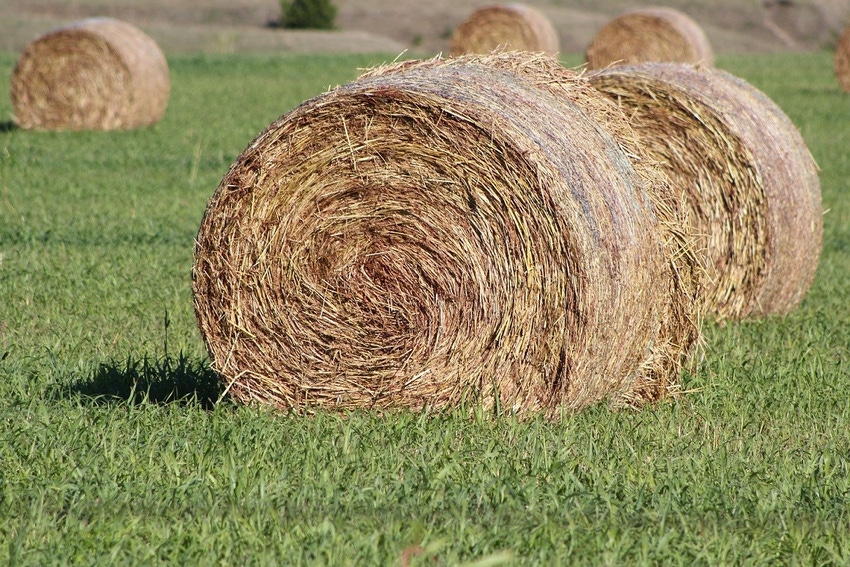While highly palatable, hay affected by Maillard reactions ties up protein, making it unusable for animal digestion.

Hay put up too wet can lead to a number of issues, most notably mold and heat, because moisture keeps otherwise dormant microbes and fungi active, decreasing forage quality and creating heat that can actually create a risk of combustion, University of Nebraska extension educator Ben Beckman recently wrote in the University of Nebraska-Lincoln "BeefWatch" newsletter.
However, even heat that doesn’t get to the level of combustion can start to cause issues with hay quality, Beckman said. Since hay is not protected from oxygen like most anaerobic fermented feedstuffs (silage, haylage, etc.), high temperatures, moisture and oxygen allow aerobic bacteria to grow, using plant protein and sugars for growth and producing carbon dioxide, water and heat, he explained. Too much of this can cause temperatures to rise high enough to kick off a process called the Maillard reaction.
Beckman said while it’s typical for hay bales to generate heat after harvest due to the curing process, too much moisture has the dual issue of: (1) helping trap heat already created instead of letting it dissipate quickly, and (2) acting as a catalyst for the Maillard reaction once it kicks off at around 170°F.
The Maillard reaction takes normal proteins and sugars and, through a series of chemical reactions, changes them into something called the Maillard polymer, Beckman said. The resulting hay is sweet/tobacco smelling and golden/caramel in color, which, according to Beckman, makes the hay a treat for cows.
On the other hand, he noted that the resulting Maillard polymer isn’t great nutritionally. The chemical reactions tie up proteins and lower the forage’s true crude protein content, he explained, adding that a standard crude protein feed analysis won’t be able to pick up this difference, causing nutritionists and producers to overestimate the available protein in the forage and underfeed cattle.
Beckman suggested that if it is suspected that some caramelization has occurred in hay bales, laboratory analyses such as tests for heat-damaged proteins (HDP) or acid detergent insoluble crude protein (ADICP) will show how much unavailable protein content there is due to the Maillard reaction, and rations then can be adjusted accordingly. At some labs, this test will also be shown with the adjusted crude protein content after damage has been factored in, Beckman added.
He also suggested that while evaluating hay bales that could be heat damaged, it’s also a good time to look for excessive mold growth on hay bales. The same wet conditions that allow the Maillard reaction to occur can also be great for mold. While not always toxic, mold can reduce hay quality and palatability, so allowing animals the freedom to pick through heavily molded bales is a great option.
After last winter’s cold and a wet summer, using every last bit of hay available to its fullest potential is going to be important, Beckman said.
Testing forage quality, whether it’s grown on farm or purchased, is a critical first step to optimizing hay use, but make sure to take a closer look when taking those samples, Beckman concluded. Watch for signs that a Maillard reaction could have occurred, and if significant, running the additional HDP test will be essential, he said.
About the Author(s)
You May Also Like

.png?width=300&auto=webp&quality=80&disable=upscale)

